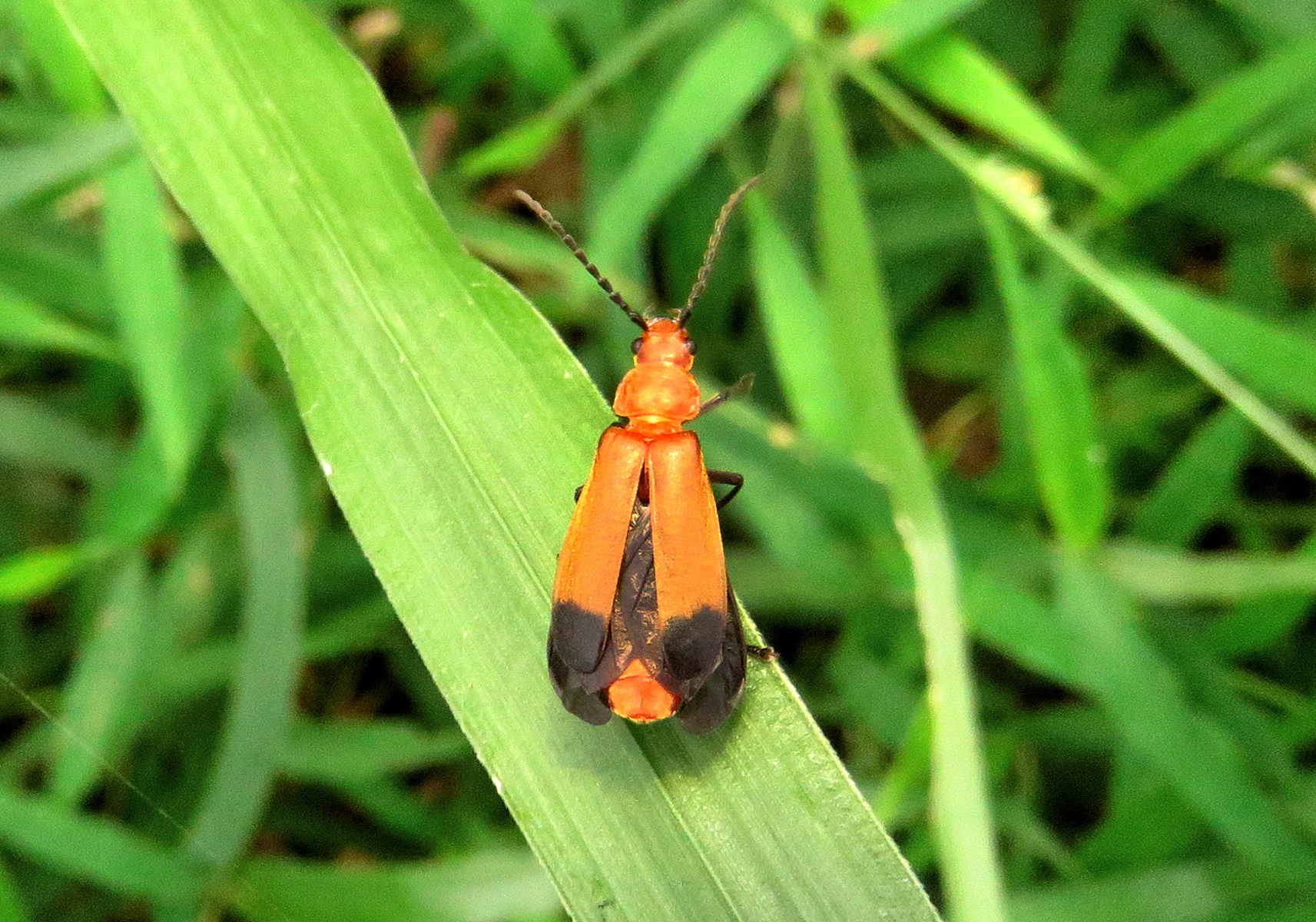Cordylocera pectoralis, part of the soldier beetle family (Cantharidae), is known for its soft-bodied, elongated appearance and striking coloration, typically ranging from yellow to reddish-brown with darker markings. These beetles are often found in gardens and fields, earning them a reputation as beneficial insects due to their predation on common pest species.
Soldier Beetles
Cordylocera pectoralis
Home » Encyclopedia » Animals » Insects » Beetles » Soldier Beetles
Classification
KINGDOM
:
Animalia
PHYLUM
:
Arthropoda
CLASS
:
Insecta
ORDER
:
Coleoptera
FAMILY
:
Cantharidae
GENUS
:
Cordylocera
SPECIES
:
Cordylocera pectoralis
Other Information
Venomous?
Soldier beetles are not poisonous and do not possess any venomous capabilities, making them safe to handle and beneficial in controlling garden pests.
A Danger to Humans?
These beetles pose no danger to humans or pets. In fact, they are often considered allies in gardening because of their predatory habits towards harmful insects.
Population Status
There is no specific data on the population size of this species, but they are not typically considered rare or endangered in their natural habitats.

Soldier Beetles (Cordylocera pectoralis), photo by David Lowenthal
Life Span:
Soldier beetles have a relatively short life span, with most living just a year, which includes time spent as larvae. Adult beetles are typically active during the warmer months and live for a few weeks to a couple of months.
Weight and Length:
These beetles are lightweight, each weighing only a few grams, typical of most small to medium-sized beetles. Cordylocera pectoralis measures about 10 to 15 mm in length.
Distribution:
While the distribution specifics for Cordylocera pectoralis are not extensively documented, soldier beetles are generally found across various parts of Europe, North America, and Asia in temperate regions.
Habits and Lifestyle:
Soldier beetles are diurnal and are often seen on flowers and leaves during the day. They are active mainly during warm months and are known for their quick movements and flying capabilities.
Diet and Nutrition:
The diet of Cordylocera pectoralis primarily consists of smaller insects, including aphids and other soft-bodied pests, which they actively hunt. Adults are also known to feed on nectar and pollen, making them frequent visitors of flowering plants.
Mating Habits:
Mating typically occurs during the summer. These beetles are often seen in pairs on flowers, where they mate and the female subsequently lays eggs in the soil or among plant debris. The larvae are predatory, like the adults, and contribute to controlling soil-dwelling insect populations.
